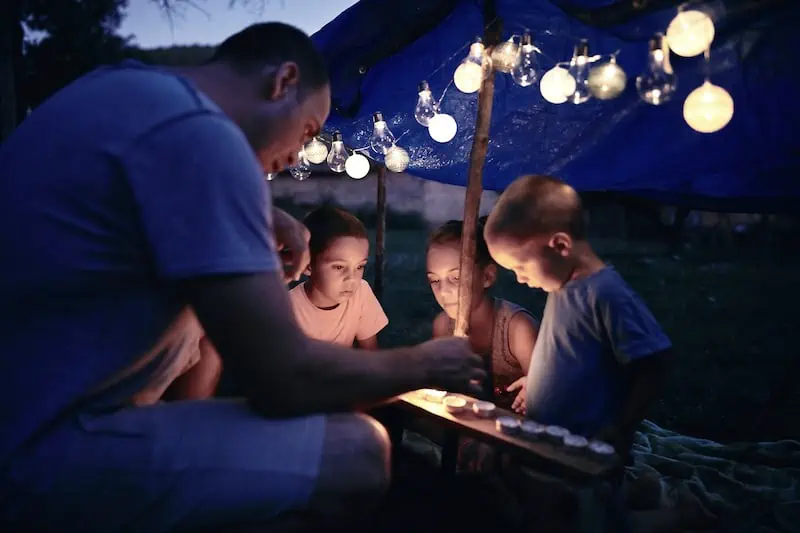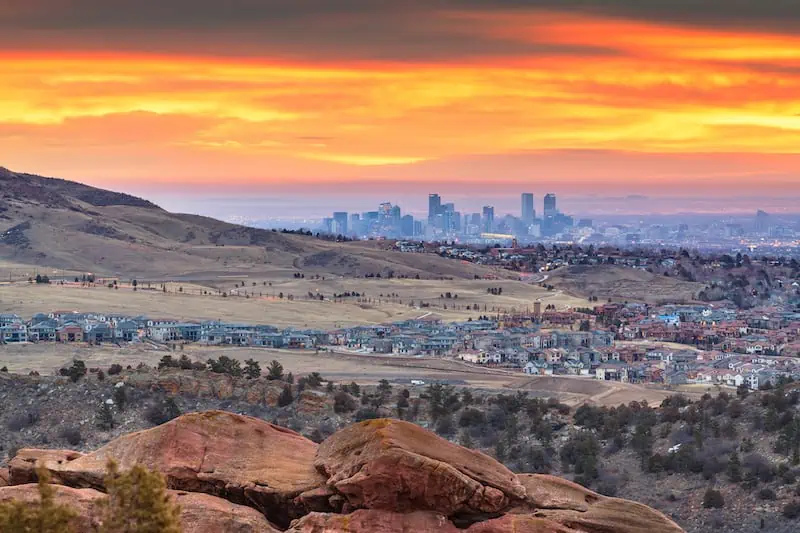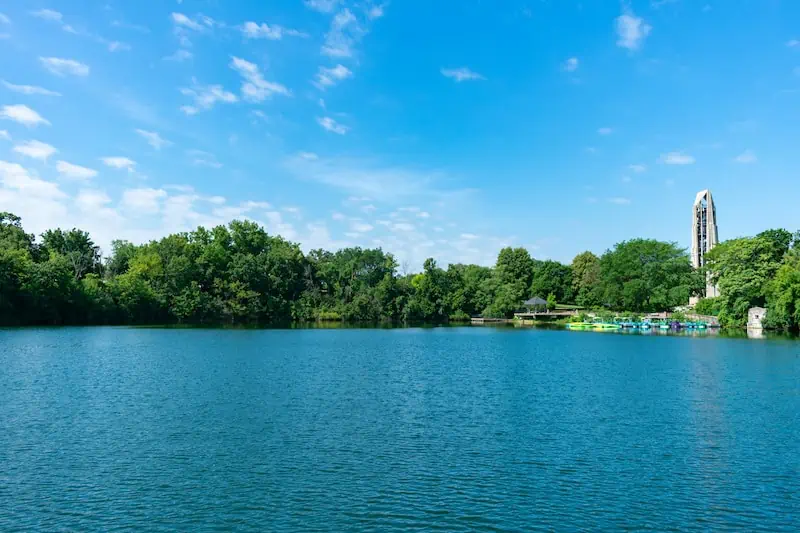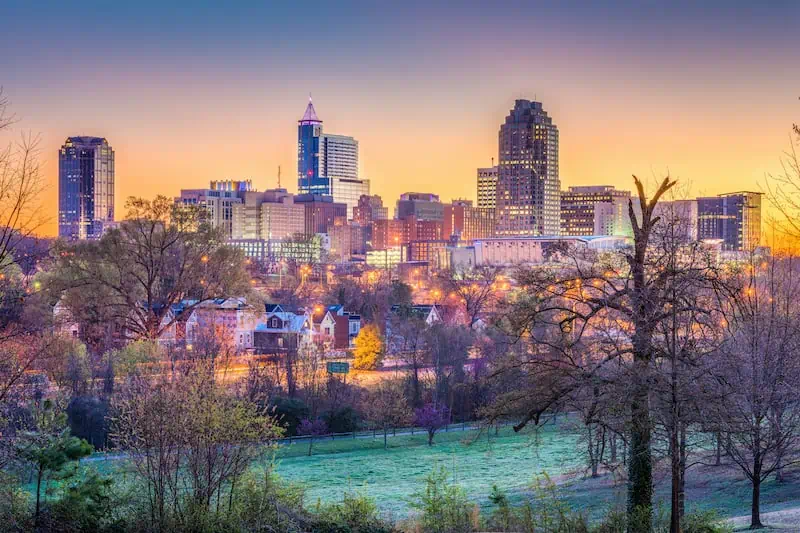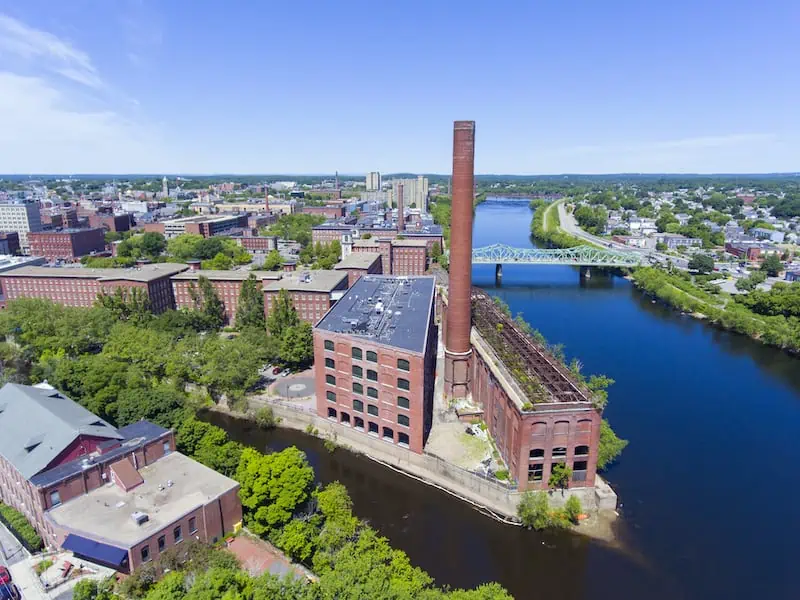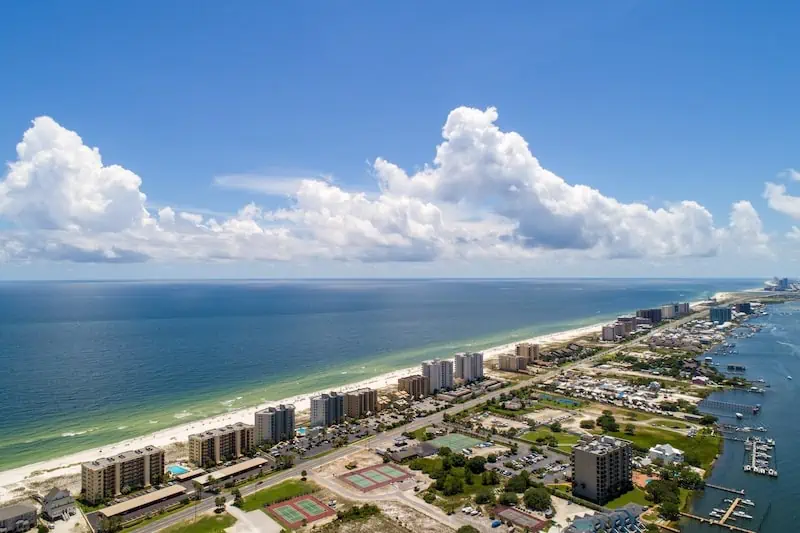Hearken back to the days of yore when you were just a young ‘un. What was your favorite thing to do? Children love thrilling experiences and the novelty of trying something new—and it’s good for their brain. We explore the importance of childhood adventures and point out a few great cities that rate very well on key measures of adventure.
Why are adventures important in childhood?
Adventures teach your child about themselves and the world they live in. It helps them expand their minds, deepen their understanding, and gain empathy.
Children are constantly taking in stimuli, and adventuring, i.e., playing, exploring the unknown. This is crucial for providing a variety of novel experiences that help children develop into curious, well-rounded people.
Adventure helps kids learn resilience, develop independent thinking, and understand what they’re capable of. Children who explore through adventurous play gain new social and behavioral skills as well as overcome challenges—all of which provide them with a sense of self-advocacy and confidence.
What kinds of adventures are good for kids?
Any and all of them! Children need challenging and fun experiences to help them grow, and really, no matter where you live, there’s no shortage of exciting adventures to share with your kids. Things you find old-hat—like a trip through the drive-thru car wash or hauling some stuff to the dump—may be brand-new and wondrous to them.
Outdoor adventures: Instill a love of nature in your kids. Take them hiking, biking, picnicking, climbing, canoeing, stargazing, swimming, bug-catching, snorkeling, or whatever outdoor adventures you, yourself enjoy. Being out-of-doors improves your child’s chances of future health and success. They get sunshine exposure that gives them the vitamin D they need for healthy bones and a robust immune system. They learn to take some risks, which gives them confidence and courage. And hopefully, they learn to appreciate—and protect—our natural world.
Educational adventures: In early childhood, small brains around a million neural connections every single second—far more than at any other time in life. These connections are formed through their experiences, and the type and quality of stimulation they get during these years helps determine which connections develop. Taking the kids to the children’s museum or your favorite science, history, natural history, or art museum, fills their little brains with knowledge.
Culinary adventures: Children with an appetite for culinary adventures are sure to love trying new cuisines. Encourage their bold palate with foods they haven’t tried before. Hit up a new restaurant or food truck every so often, and devote a day a week to cooking new foods.
Artistic adventures: Have a burgeoning Picasso in your midst? Check out nearby museums, and look for art shows in your area. Get your young art lover involved in the worlds of painting, sculpture, crafting, music, moviemaking, theatre, or dance.
Travel adventures: Mountains, deserts, and oceans, oh my! If your kid has an insatiable wanderlust, they’ll love seeing new places and novel landscapes. Hit the road for trips to national parks, famous landmarks, and big cities. Encourage them to learn a second (or third) language.
Thrill adventures: Even Evel Knievel was a kid once. Young thrill-seekers will get a kick out of amusement parks, white-water rafting, and climbing walls. Risky play—with supervision—boosts kids’ confidence and risk perception, and it reduces their chances of developing fears the could hold them back in life.
Backyard/at-home/playground adventures: You don’t have to leave your home — or even your neighborhood — to encourage your child’s adventurous side. Imaginative play, backyard treasure hunts, and allowing your child to take risks are ways to raise an adventurous kid right in the backyard.
What experts say about nurturing adventure—no matter where you live
Whether you’re isolated in rural Nebraska or locked in the concrete jungle of New York City, it’s possible to instill a sense of adventure in your offspring. Ann Pleshette Murphy, the author of The Secret of Play, lists five things parents should do if they want to raise an adventurous kid:
Create a safe environment. Your child will feel safe exploring and adventuring if they know you’re not going to get mad at them for taking risks and testing limits. Don’t yell, stay positive while they try new things, and be consistent and honest. Most importantly, display affection—hug ‘em, cuddle ‘em, and listen to everything they want to tell you.
Let kids explore. It’s a knee-jerk reaction to say, “no” when your kid asks you to do something potentially risky or messy, like trying to cut their apple into slices with a knife or mixing flour with food dye just to see what happens. Instead of saying no automatically, let them try new things (with supervision, of course) so they experiment, problem-solve, and learn new skills.
Hold back when your kid gets hurt. When a child falls and scrapes their hands, they immediately look to the adults around them for a reaction. Most of the time, if you don’t freak out, they don’t freak out. If your child gets hurt, wait for the reaction. If no tears are forthcoming, pretend like it didn’t happen. It might not be easy, but it’ll teach your sweet baby physical literacy and resilience.
Accept all types of adventurousness. Your child’s idea of adventure might be different from the kind you enjoyed as a kid. Maybe you’ve got a shy kid who’s dipping their toes in the unknown by going to a big birthday party—that’s an adventure! Or your kid likes making artistic messes out of play-doh and water, an adventure in texture and color. Some children lean toward physical adventurousness—the fearless kid that swings fast and climbs high and nearly gives you heart failure every single day. These are all valid ways to be adventurous. Watch your kid, and follow their lead.
Introduce them to things that scare them. Gently, of course! Say your kid is afraid of big dogs, even though they’ve never met one. Call up a friend with a great dane, or take your kid to the shelter to show them that big dogs can be very nice. Take a similar tactic with a child who’s afraid of heights—go to the top floor of a tall building, and let them enjoy the view and get accustomed to the height with your support. Soon, they’ll see that the things they once thought were scary aren’t so bad after all.
We found nine US cities of different sizes in different regions where it’s easy to have all manner of experiences. We evaluated each city for family-friendliness:
- Cost of living index (US average is 100)
- Crime rate (US average is 22.7) Q
- Quality of its education system
We also put the cities into three categories: those rife with outdoor adventures, those with endless opportunities for cultural discovery, and cities that are an excellent home base for taking road trips to new and exciting places.
Best Cities for Outdoor Adventures
Taking your kids on outdoor adventures is crucial for healthy childhood development. Unstructured time outdoors helps children develop creativity and executive functioning—working memory, mental flexibility, and self-control. Modern society is becoming more reliant on technology than ever before, and children are losing their connection to the natural world. Digging in the dirt, seeing wild animals, and getting lots of sunshine are great ways for kids to start appreciating nature.
Here are the top three cities to live in for outdoor adventures.
Boulder, Colorado
Population: ~106,000
Cost of living index: 167.4
Violent crime rate: 13.5
Education: A. Boulder Valley School District ranks #4 out of 80 Colorado districts.
Why it’s a great place for outdoor adventures:
Seated at the foothills of the majestic Rocky Mountains, Boulder has it all: Breathtaking scenery, a pleasurable climate, and tons of spectacular options for outdoor adventures are just the beginning of what this Colorado city has to offer. National Geographic has even rated Boulder as the happiest city in the US.
Young outdoor enthusiasts will love Boulder for its plentiful hiking and biking trails. The Open Space and Mountain Parks have trails that go through open land brimming with Colorado’s native flora and fauna, set against the backdrop of the gorgeous Rockies—which themselves are packed with adventures year-round.
Some of the many outdoor activities in and around Boulder include rock climbing at the famous Flatiron rock formations, picnicking in Boulder Mountain Park, fishing in one of the city’s many prime fishing spots, tubing on Boulder creek, kayaking on Boulder Reservoir, exploring the wilderness surrounding the city.
More reasons to choose Boulder:
Boulder isn’t just an outdoor adventure lover’s paradise. It may have a small-town vibe, but it’s got big-city tastes, with a thriving foodie scene, incredible museums, a planetarium, and a vibrant downtown with all sorts of interesting things to do. For those who enjoy classical music—or who don’t, but want their kids to—Boulder even has its own chamber orchestra. And it’s just a half-hour drive to Denver and everything that a world-class city offers.
Bend, Oregon
Population: 197,756
Cost of living index: 123.5
Violent crime rate: 12.2
Education: B+
Why it’s a great place for outdoor adventures:
Bend is situated between the Cascade Range and the high desert in central Oregon, making it an outdoor playground with a multitude of outdoor recreational opportunities. Known as “Bike City U.S.A.,” Bend has fantastic bike trails, including the Three Sisters Scenic Bikeway offering incredible views of the Three Sisters peaks in the Cascades. Mount Bachelor is an extinct volcano with some of the best skiing, snowshoeing, and snowboarding around, and Pilot Butte, located right in the city, is an ancient cinder cone with three hiking trails that reward you with gorgeous mountain and desert views
The Deschutes River in the heart of Bend invites kayakers, floaters, tubers, swimmers, and SUPers of all skill levels to its calm channel, and it welcomes whitewater rafters to its whitewater channel. The volcanic landscape around Bend is dotted with around 400 lava tube caves to explore, and nearby Smith River State Park features more than 1,800 climbing routes for novice climbers and experts alike.
More reasons to choose Bend:
When you’re not adventuring in the Great Outdoors, you’ll enjoy the urban adventures Bend offers. The Old Mill District alongside the Deschutes River is home to an eclectic selection of restaurants, shops, and the Les Schwab Amphitheater, the largest outdoor concert venue in Oregon. Bend loves festivals, and features them year-round, including Winterfest, Brewfest, and Art in the High Desert. The Downtown First Friday Art Walk offers an eyeful of local art and artists’ studios, and the Central Oregon Symphony and Cascades Theatre offer performances for the entire family.
Chesapeake, Virginia
Population: 239,982
Cost of living index: 106.4
Violent crime rate: 18.1
Education: A
Why it’s a great place for outdoor adventures:
A suburb of Norfolk in Virginia, Chesapeake lies along the Elizabeth River on the Tidewater coastal plain and is crisscrossed by waterways galore. The nearby Great Dismal Swamp National Wildlife Refuge covers 170 square miles of forested wetlands and is a major draw from hikers, birders, photographers, and wildlife enthusiasts. Kayak or canoe deep into the cypress swamp, fish the 3,000-acre Lake Drummond, or hike the many trails, including the Elizabeth River Trail.
Chesapeake proper offers a large network of urban hiking and biking trails and numerous green spaces, both manicured and wild, and, of course, there’s the Chesapeake Bay, where you can engage in all manner of water activities. From Chesapeake, it’s just a 26-minute drive to Virginia Beach, where you can swim, surf, paddle, and kayak — or just lay on the beach and enjoy the waves.
More reasons to choose Chesapeake:
Chesapeake is home to world-class arts and entertainment experiences, including numerous galleries, museums, and theaters. The Virginia Museum of Contemporary Art offers gallery exhibitions and studio art classes, and the city’s many history museums explore various aspects of the Civil War, including exciting reenactments, and the African American Heritage Trail is a self-guided tour exploring the people and places of the Revolutionary War and Civil War and the Underground Railroad.
DID YOU KNOW?
You can get Chesapeak, VA move help costs, FAQs, and stats for more than 10 move helpers with our move help in VA guide.
Best Cities for Cultural Adventures
Books and movies have massive educational benefits for children, but nothing compares to real experiences. Children who engage with art and culture learn to think about the world compassionately and with an open mind. Cultural awareness teaches kids about diversity and respecting people who live differently than they do.
Here are the best cities to live in to expose your child to all manner of cultural adventures.
Naperville, Illinois
Population: 147,501
Cost of living index: 129.6
Violent crime rate: 10.2
Education: A+. Ranked Number one city with the best public schools in America.
Why it’s a great place for cultural adventures:
Naperville is a stone’s throw from Chicago, which has world-class dining, entertainment, museums, and arts. But Naperville has its own cultural adventures, including a number of museums, like the Naper Settlement, the 1,700-acre Morton Arboretum, and the Knoch Knolls Nature Center, situated on the DuPage River.
The downtown historic district boasts Naperville’s professional Bright Side Theatre, and the iconic Wentz Concert Hall features world-class acoustics and brings in a host of performances each year. Naperville’s Century Walk is made up of more than 40 pieces of public art and winds throughout the downtown area. The annual Bites and Sites Food Tour is a culinary adventure with plenty of fun stuff scheduled each year. Other great festivals in Naperville include Ribest, SoulFest, the Naper Nights outdoor community concert series, the Naper Pride Festival, Hometown Holidays, the St. Paddy’s Day Parade, and free municipal band concerts every Thursday in June. Naperville’s Last Fling festival is a four-day event over Labor Day featuring a carnival, national musical artists, a wide range of food vendors, and the largest Labor Day parade in Illinois.
More reasons to choose Naperville:
For outdoor and natural adventuring, Naperville offers the 2,000-acre Springbrook Prairie Forest Preserve, a grassland prairie replete with walking trails. For water fun, Paddleboat Quarry is situated on the riverwalk and rents out paddle boats and kayaks. Cantigny Park features formal gardens, golfing, playgrounds, picnic spots, and three miles of hiking trails.
Raleigh, North Carolina
Population: 464,485
Cost of living index: 102.3
Violent crime rate: 20.3
Education: A
Why it’s a great place for cultural adventures:
Known as the Smithsonian of the South for its many free-of-charge, high-quality museums and cultural institutions, Raleigh offers an abundance of fun and interesting cultural adventures for the whole family. The James B. Hunt Library is an architectural masterpiece and a tech-lover’s dream, featuring technological wonders including a robot that fetches books. The North Carolina Museum of Art features art, of course, but also trails, a theater, and a live music venue. The Juniper Level Botanic Garden showcases 27,000 different plant species throughout 28 acres, and the Municipal Rose Garden at the center of the Raleigh Little Theatre campus includes 60 varieties of roses and hosts a free outdoor movie series in the summer.
Home to the Carolina Hurricanes, Raleigh also sports a robust athletics scene that will entertain even the most novice sports-goers. The barbeque in Raleigh is off the charts, but if that’s not your jam, the city has over 1,200 restaurants to choose from. Just a few minutes away in the town of Cary is La Farm bakery, which is considered one of the best European-style bakeries in America.
More reasons to choose Raleigh:
Proximity to wild spaces in the Great Outdoors is another perk of Raleigh. The mountains are less than three hours away in Western North Carolina, and just a few hours to the east are ocean beaches and the gorgeous Outer Banks. Raleigh also has plenty of lakes, rivers, and parks to explore.
Berkeley, California
Population: 121,485
Cost of living index: 235.2
Violent crime rate: 28.5
Education: A+
Why it’s a great place for cultural adventures:
Berkeley is just 20 minutes away from the iconic cultural landmarks of San Francisco, but it’s less expensive than the City—and as a cultural hub in its own right, it’s full of colorful and exciting adventures. Berkeley is a city of art, home to the Berkeley Repertory Theatre, the Berkeley Art Museum, and the Pacific Film Archive. Numerous festivals and special events are put on each year by over 100 cultural arts organizations.
The Telegraph District along Telegraph Avenue is the heart and soul of Berkeley. It boasts tons of quirky restaurants, adventurous boutiques, and some of the best people-watching in the country. Berkeley’s even got an art scene just for kids—the Habitot Children’s Discovery Museum and Adventure Playground will fill your offspring’s imagination with wonderful sights, sounds, and activities.
More reasons to choose Berkeley:
Berkeley has a temperate climate that allows for outdoor fun all year round. Six magical Pacific Ocean beaches are within a two-hour drive of Berkeley. Land’s End, which is just 45 minutes away, has walking trails and offers a majestic view of the Pacific and Golden Gate Bridge.
See prices for local moving labor. Read real customer reviews. Easily book your help online.
Best Cities for Traveling Adventures (Day and Weekend Trips)
Traveling ignites your child’s imagination, curiosity, and sense of adventure. It introduces kids to new scenery, new food, and other ways of life, and it illustrates that despite the differences in landscape and culture, people everywhere are more or less the same.
Families who love to take to the road will find a wealth of opportunities for day trips and weekend getaways in these cities.
Newton, Massachusetts
Population: 88,593
Cost of living index: 215.5
Violent crime rate: 9.7
Education: A+
Why it’s a great place for traveling adventures:
A suburb of Boston, Newton offers close proximity to incredible cultural attractions, and it’s a great place to live if your family loves the road trip life. From Newton, you can enjoy easy weekend getaways to numerous big cities, quaint towns, the quiet countryside, the seaside, and scores of national parks in Massachusetts, Vermont, Rhode Island, and Maine. In just over three hours, you can be in the heart of New York City and all that metropolis offers.
Newton itself features plenty of adventures for weekends at home, including lots of dining, arts, and entertainment opportunities as well as outdoor destinations like Hemlock Gorge, found on one of Newton’s trails and featuring a beautiful, historic bridge that makes epic echoes. Scenic Crystal Lake is a great swimming spot with a small beach, and the Charles River, a prime canoeing spot, is worth the short drive any day of the week.
More reasons to choose Newton:
Newton is a history buff’s dream, where history museums and historical landmarks abound. Farmers’ markets and world-class ribs will appease foodies, while Newton’s cultural festivals and theatre scene are sure to satiate the art lovers in your family.
Pensacola, Florida
Population: 52,642
Cost of living index: 98.6
Violent crime rate: 35.7
Education: B-
Why it’s a great place for traveling adventures:
Pensacola, located on the Florida panhandle, is home to pristine, white-sand beaches, which is a must for many adventurous, outdoorsy families. But it’s also a great home base for weekend getaways. From Pensacola, you can get to New Orleans in under three hours, and just an hour away, you can visit the incredible historic sites in Mobile, Alabama.
A few hours of scenic driving will get you to Tallahassee, the state capital, which is rife with Civil War sites and home to the impressive capitol building, the Museum of Florida History, the fascinating Lake Jackson Mounds Archeological State Park, and Alfred B. Maclay Gardens State Park. About an hour away from Pensacola is the Black River State Forest, the largest forest in Florida, where you can camp, fish, boat, kayak, and canoe. Just down the road from Pensacola are numerous charming beach towns, including Destin, Fort Walton, and Seaside.
More reasons to choose Pensacola:
Pensacola has plenty to do without leaving the city. Ziplining, water parks, water sports on the Bay, and a multitude of museums will keep your family busy and entertained when you’re not on the road. Pensacola is also home to the Blue Angels, the Navy’s Flight Demonstration Squadron, whose amazing aerial stunts can be seen during the month of July.
Sacramento, California
Population: 500,930
Cost of living index: 118.2
Violent crime rate: 35.6
Education: B
Why it’s a great place for traveling adventures:
Situated in northern California, Sacramento is the state capital, and it’s an affordable home base for an adventuring family. From Sacramento, it’s a quick and easy trip to Yosemite National Park, Stanislaus National Forest, Napa Valley, Lake Tahoe, and San Francisco. Within about three hours, you can be on the famous beaches of Marin County, and in five hours, you’ll be staring up at the tallest redwood tree on earth.
Watersport enthusiasts rejoice! Unlike most of California, Sacramento is home to scores of rivers and lakes. These waterways provide ample opportunity for day trips to go boating, fishing, swimming, rafting, hiking, and more.
More reasons to choose Sacramento:
Sacramento is a beautiful city filled with eclectic neighborhoods and great food. It has a rich history from the Gold Rush days and is home to one of the oldest triathlons in the nation. Sacramento is a cultural hub, boasting lots of annual festivals and carnivals and home to the Sacramento Philharmonic and Opera.
Although all of these cities are great places to raise an adventurous kid, nearly any town or city will do, as long as you engage in activities that are new and exciting for your child!
Check with your local tourism office for a comprehensive list of everything your location offers. Chances are, you’ll discover fun things to do that you had no idea existed—and you’ll find yourself enjoying exciting adventures with wide-eyed wonder, right alongside the children.
And, if you do decide to relocate your adventurous children cross-country, let movers do the heavy lifting and transporting for you.

